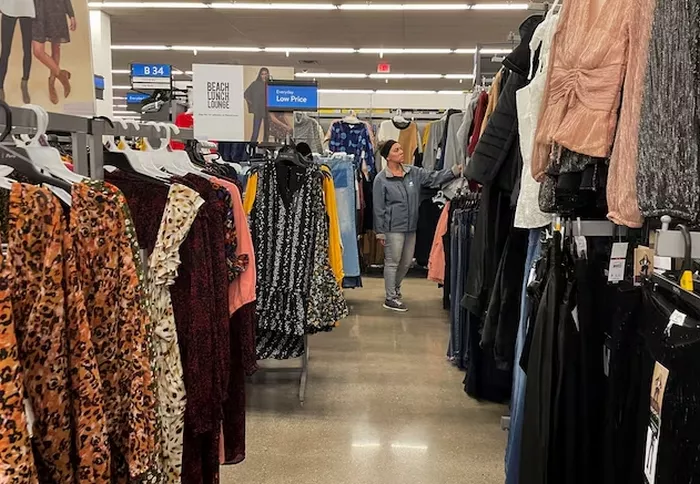U.S. retailers, including giants like Walmart and several apparel brands, are racing to secure China-made merchandise in time for the key summer shopping season, which begins in late May. This urgent push follows a new agreement between Washington and Beijing to temporarily reduce tariffs on Chinese goods from 145% to 30% for a period of three months.
The tariff reduction, announced on Monday, has reignited orders for popular summer items such as sundresses, bathing suits, clogs, and sunscreens from Chinese factories. According to Portless, a logistics company aiding U.S. e-commerce brands in air-shipping goods from China, the decision immediately spurred a rush in production and shipping.
“Once the tariff cut was announced, our clients said ‘we are in go-go-go mode,'” said Izzy Rosenzweig, CEO of Portless. Among their clients are swimwear brand Hapari and bug repellent company NatPat. “They said, ‘let’s restart production and shipping.’”
Typically, U.S. retailers begin placing summer merchandise orders from China at least two to three months before Memorial Day, which falls on May 26 this year. While ocean shipping remains the primary transport method—taking 30 to 60 days depending on route and vessel size—orders usually start in late winter or early spring to accommodate production schedules, explained John Harmon, managing director of technology research at Coresight Research.
However, orders came to a halt after former President Donald Trump imposed sweeping tariffs, including retaliatory and fentanyl-related levies, on April 9. The resulting 145% tariffs led many U.S. companies to freeze their shipments. Data from container tracking firm Vizion, shared with TD Cowen, revealed that container bookings from China to the U.S. dropped by nearly 50% in the final week of April.
Following Monday’s tariff reduction, the trend reversed. But Harmon cautioned that restarting the supply chain after a month-long pause won’t be immediate.
“It has been super busy these two days,” said Liu, a toy manufacturer based in Dongguan, China. “We are booking containers, and some of our goods are already heading to Shenzhen port. In recent months, there were fewer cargo buses on the road, but today there’s a traffic jam on the way to the port.” Liu supplies major U.S. clients, including Walmart, the top importer of containerized goods into the U.S.
Newell Brands, which supplies products like Graco strollers and baby seats and also counts Walmart among its customers, confirmed on Thursday that it had resumed shipping items previously warehoused in China.
Despite the sudden spike in demand, shipping rates remain relatively stable. Freightos, a platform for booking and paying freight services, reported a 3% week-over-week increase in spot rates for 40-foot containers to the U.S. West Coast, reaching $2,395. This is still only half the cost recorded in February, when companies rushed to stockpile inventory in anticipation of the initial tariff hike.
Nonetheless, some companies fear freight costs may soon rise. Kim Vaccarella, CEO of tote-bag maker Bogg Bag—sold at retailers like Target—has accelerated production in China to ensure goods reach New Jersey by August. Instead of launching multiple new products, she is focusing on a few best-selling items to speed up delivery.
While the temporary tariff relief offers U.S. brands a window to replenish summer stock, the 30% levy still in place will pressure margins for both large and small retailers in the coming months. Walmart executives noted after their earnings report on Thursday that price increases may begin by the end of May. Likewise, German footwear brand Birkenstock has announced global price hikes.
Retailers such as Walmart, Target, and Costco had already front-loaded their orders earlier this year in anticipation of trade tensions. According to CFRA analyst Arun Sundaram, Walmart’s inventory rose by around 3% in the quarter ending January 31—the first increase in nearly two years. Costco reported a 10% inventory hike, Zumiez saw a 14% increase, and Target’s stock levels grew by 7% during the same period.
Although the tariff reprieve is a timely boost, Sundaram warned of possible supply chain disruptions—not as severe as during the COVID-19 pandemic, but still significant. For instance, some manufacturers of Halloween goods told Reuters they are scrambling to produce and ship seasonal items to the U.S. within the 90-day tariff window.
Gene Seroka, Executive Director of the Port of Los Angeles, noted that businesses may not have sufficient time to prepare for both the summer season and the subsequent back-to-school rush in July. “Right now, we’re looking at the last orders going in for back-to-school, and maybe some lingering summer fashion items. So, that’s really tight,” Seroka said.
Stephen Lamar, President of the American Apparel & Footwear Association, which includes Adidas America among its members, cautioned that a surge in import activity could clog ports. “The tariff war has delayed back-to-school shipping by a month. But it’s not like school districts can delay school by a month,” he said.
In short, the temporary tariff rollback has triggered a retail scramble to catch up on lost time, with companies racing against the clock to meet seasonal demand while managing the lingering impacts of trade tensions and logistical strain.
Related Topics
- THE ICONIC and Uber One Launch Exclusive ‘DeliveRobe’ at Australian Fashion Week to Celebrate Member Days
- Top Three Hair Trends That Stole the Show at Australian Fashion Week
- Crew Clothing Expands into Affluent West London with New Chiswick Store

